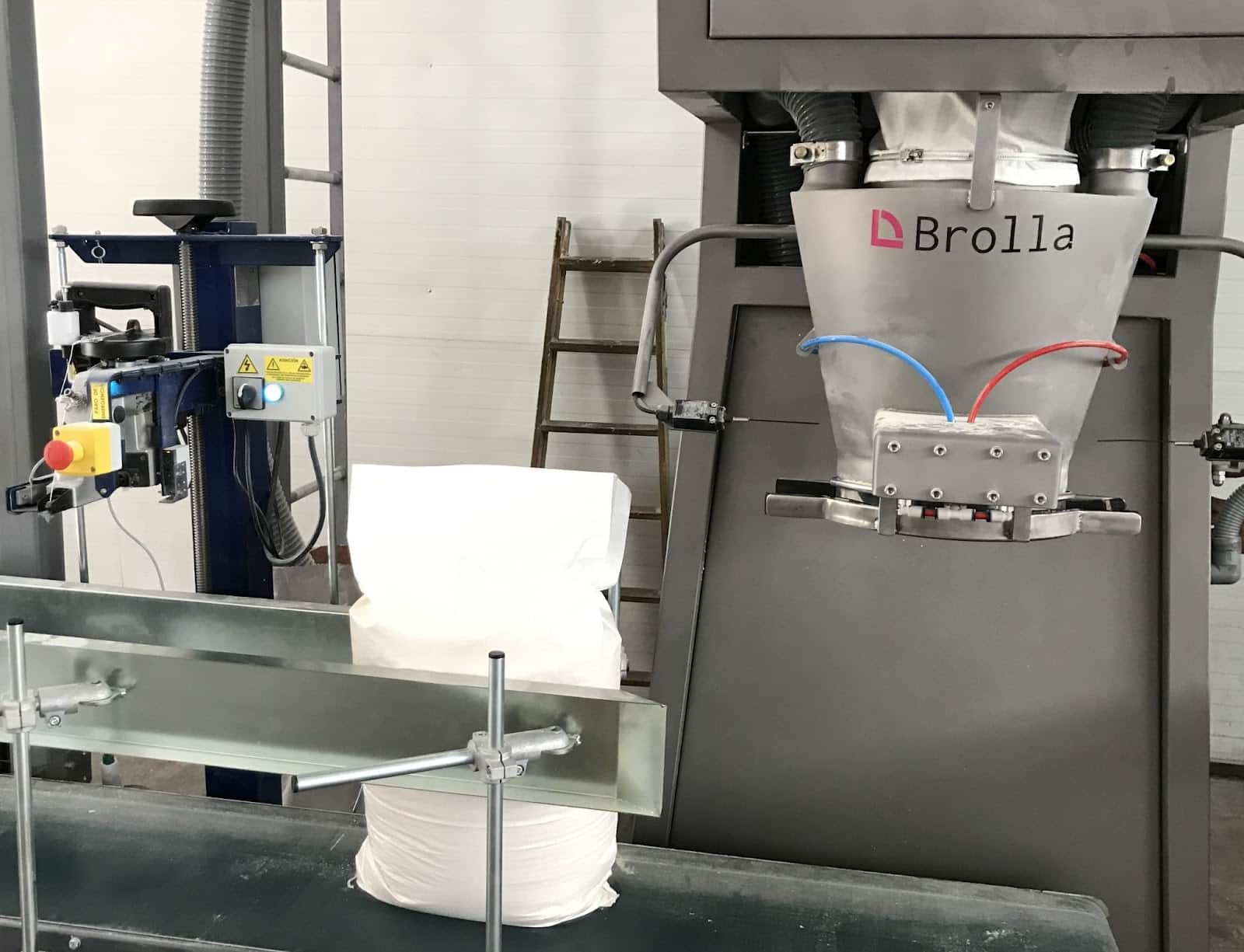Actualizado el Monday, 27 January, 2025
Solid bulk products must be stored in containers for commercialization. The most common way to store bulk products in small quantities is by using sacks or bags. This is not an easy task, as it requires introducing the product into the sacks quickly, efficiently, and accurately, along with a perfect sealing. This means that performing this process manually is difficult and tedious. As a solution to these challenges, bagging machines emerge, designed to package large amounts of product quickly and accurately in small containers.
If you want to continue learning about the semi-automatic variant of bagging machines, keep reading to discover how these types of machines can help in your production plant.
What is a semi-automatic bagging machine and what is it used for?
Bagging systems are machines designed to assist humans in the task of bagging or packaging products. Depending on the level of human intervention in this process, bagging machines are classified as semi-automatic or automatic bagging systems.
Semi-automatic bagging machines are packaging systems where weighing and dosing are automated. Other tasks must be performed with human assistance, including placing the sack in the filling position, initiating the filling cycle, and removing the filled open or sealed sack from the machine.

Semi-automatic bagging machine
Types of semi-automatic bagging machines
There are two main types of semi-automatic bagging machines: net weight and gross weight. The main difference between these two lies in where the load cells used for weighing are located.
- Net weight semi-automatic bagging machines: The weighing process occurs in the preparation hopper, prior to product dispensing. These allow for higher production.
- Gross weight semi-automatic bagging machines: The weighing process occurs at the sack’s anchoring point.
Both types of semi-automatic bagging machines allow working with various materials, such as woven polypropylene sacks, paper, plastic, or mesh.
How does a semi-automatic bagger work?
As mentioned earlier, a semi-automatic bagging machine automates only the weighing and dispensing tasks. These tasks vary depending on the type of semi-automatic bagging machine.
Net weight semi-automatic bagging machine
The weighing process uses an electronic device to control the product’s entry into the bagging machine. The exact amount of product is weighed and temporarily stored in a hopper before dispensing. The dispensing process begins when the operator places a sack on the machine. The weighed amount of solid product is dispensed from the hopper, leaving it free to repeat the cycle.
Gross weight semi-automatic bagging machine
In this type of machine, the weighing process occurs simultaneously with dispensing, as the product is weighed directly in the sack.
Aside from these automated tasks, the operator must introduce and remove the sack and seal the container. These machines are often accompanied by sewing or sealing devices.
Advantages over manual bagging or automatic bagging machines
Semi-automatic bagging systems are a good solution for low production levels. They offer significant advantages compared to other bagging solutions when there are frequent format or product changes.
These types of bagging machines are an excellent way to begin automating the bagging process, as they require a lower investment compared to fully automated systems.
In conclusion, semi-automatic bagging machines are an excellent first step towards bagging automation. If you’re looking to implement this type of machinery in your production process, contact us for advice.
- What is a Sorting System? - 10 de July de 2025
- Cross-Docking Automation: Mastering Zero Inventory - 28 de March de 2025
- Types of Cross-Docking, Examples, and Which One Is Best for You - 14 de March de 2025


